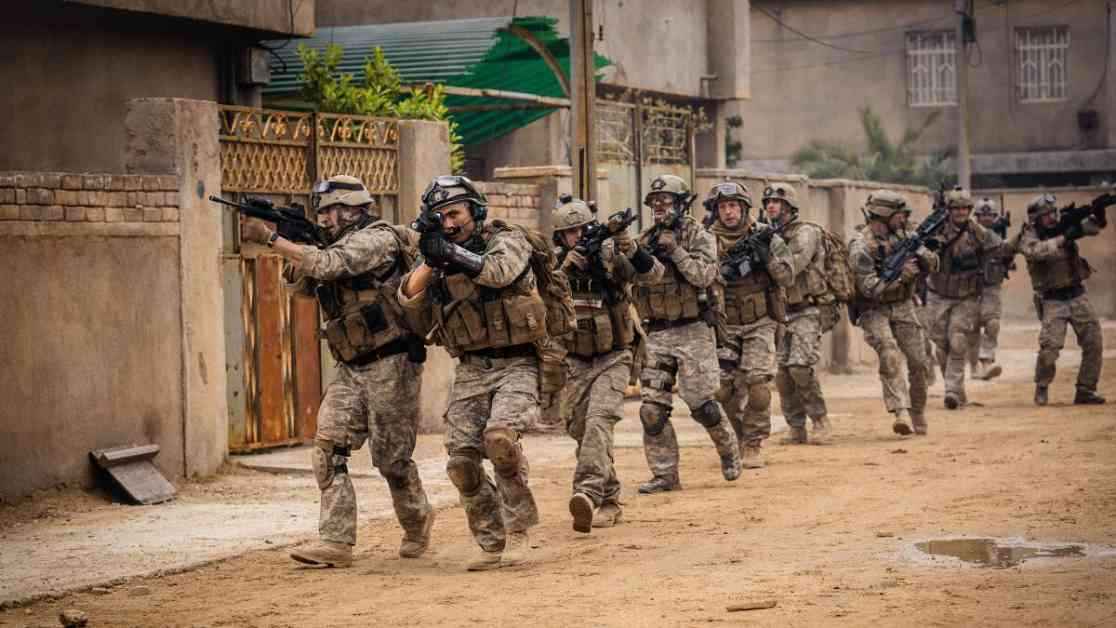Summary: “Warfare” is a gripping and realistic combat movie that sheds Hollywood clichés to focus on the intense and brutal reality of war. Directed by Alex Garland and former Navy SEAL Ray Mendoza, the film reenacts a harrowing combat incident in Ramadi, Iraq, on Nov. 19, 2006. Through the eyes of Mendoza and his comrades, viewers are immersed in the chaos, fear, and heroism of the battlefield, offering a raw and unfiltered portrayal of the horrors of war.
Unveiling the Brutal Realities of Combat
In a cinematic landscape saturated with bombastic explosions, heroic speeches, and melodramatic deaths, “Warfare” stands out as a stark and unflinching portrayal of warfare. The film dives headfirst into the heart of battle, stripping away the gloss and glamour to reveal the gritty truths that soldiers face on the front lines. There are no Hollywood tropes here—no heartwarming camaraderie between mismatched soldiers, no poignant farewell scenes with loved ones back home. Instead, viewers are confronted with the harsh realities of combat: the deafening roar of gunfire, the agonizing screams of the wounded, and the unrelenting fear that grips every soldier in the heat of battle.
At the center of the film is Ray Mendoza, a former Navy SEAL who brings his firsthand experience of combat to the screen. Played with stoic intensity by D’Pharaoh Woon-A-Tai, Mendoza serves as the anchor of the narrative, guiding viewers through the chaos and confusion of the battlefield. His calm and commanding presence, relayed through a walkie-talkie as he coordinates his team’s movements, offers a glimpse into the steely resolve and unwavering courage of those who face death on a daily basis.
A Humanizing Glimpse into the Lives of Soldiers
While “Warfare” is undeniably a war movie, it also delves into the human side of conflict, showcasing the camaraderie, humor, and vulnerability of soldiers thrust into unimaginable circumstances. The ensemble cast, comprised of rising young talents like Will Poulter, Charles Melton, and Noah Centineo, brings a sense of authenticity and camaraderie to their roles, capturing the bond that forms between soldiers in the crucible of combat.
One of the most striking scenes in the film is a moment of levity amidst the chaos: a group of soldiers watching a hilariously incongruous exercise video before heading out on a mission. The juxtaposition of the soldiers’ laughter and camaraderie against the backdrop of impending danger highlights the humanity that persists even in the darkest of times. It’s a reminder that soldiers are not just warriors, but individuals with fears, hopes, and dreams beyond the battlefield.
As the film unfolds, we witness the toll that war takes on the soldiers, both physically and emotionally. From the harrowing injuries suffered by Elliot Miller (played by Cosmo Jarvis) to the split-second decisions that can mean life or death, “Warfare” paints a vivid and unvarnished portrait of the sacrifices and struggles faced by those who serve their country in times of war.
In the end, “Warfare” is not just a movie about combat—it’s a powerful meditation on the cost of war, the complexities of human nature, and the enduring bonds that unite soldiers in the crucible of battle. By immersing viewers in the raw and unfiltered reality of warfare, the film challenges us to confront the uncomfortable truths of conflict and to grapple with the profound questions that underpin the choices we make in times of crisis.
As the credits roll and the lights come up, we are left with a haunting question echoing in our minds: why? Why do we fight? Why do we send young men and women into harm’s way? “Warfare” may not provide easy answers, but it forces us to reckon with the consequences of our choices and the human cost of war in a way that is both unflinching and deeply compassionate. In a world where conflicts rage and lives are lost every day, this is a message that resonates far beyond the confines of the movie theater.














